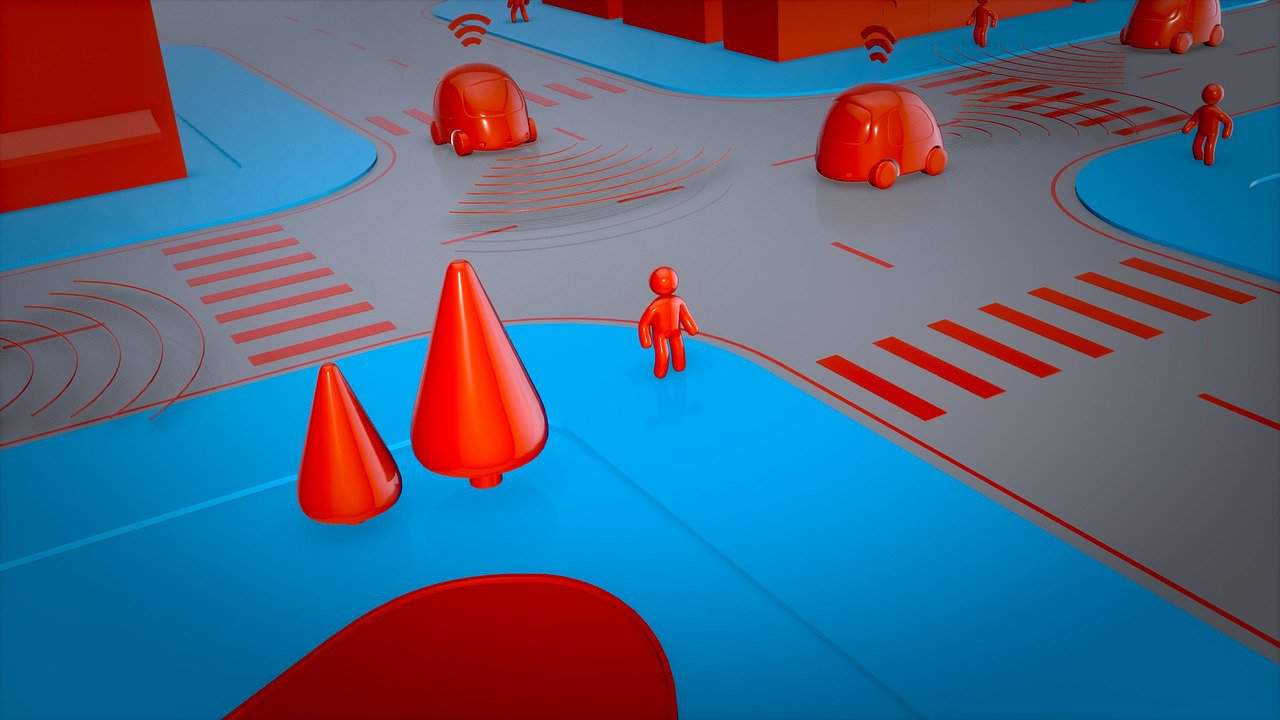We’ve finally reached the namesake of this site. Regardless of if you interpret the “auto” in level 5 auto to mean automobile or autonomous, you’re in the right place to learn more.
What is Level 5 Driving? Level 5 driving is full driving automation. That is, the car’s systems can accomplish every part of the dynamic driving task (DDT). They can also monitor all of the vehicle’s surroundings and make predictions about what the objects in the space around it will do next. Further, the car can do this anywhere. The systems are no longer confined to a limited operational design domain (ODD). And, finally, the car operates without the expectation or need for a human to ever take over driving — even in the case of a system failure.
In short, level 5 automation represents a true driverless car. Humans will only be responsible for inputting the desired destination. The car will do the rest. This is the image that was conjured in each of our minds when we first heard about “self-driving” cars.
It’s worth noting that by saying that a level 5 car is expected to drive “anywhere,” I mean that it is expected to be able to drive without any ODD limitation. However, to reach level 5, a car is only expected to be able to drive on roads and in situations that an average human would be able to navigate. For example, if no human could be expected to drive a car in a blizzard, then a car could still be level 5 without being able to drive itself in that situation. Similarly, a car wouldn’t be denied a level 5 description for being unable to operate in an extreme off-road situation because an average human driver would also not expect to drive in that situation.
Along that line of thinking, the levels of automation are used to describe the technical abilities of a car’s systems. So, if a car is unable to operate outside of the state for legal reasons, for example, but would technically be able to if it weren’t for the legal restriction, it would still be level 5 — even though it would have a limited ODD in that scenario.
Do level 5 cars exist today?
No. No truly level 5 Automated Driving Systems (ADS) exist today. A combination of technological improvements, legal changes, and shifts in public opinion will need to occur before level 5 cars take over the roads.
When will level 5 cars be the norm?
This is a very difficult question. Technological advances often occur more quickly than we imagine they will. That said, legal and policy changes often take even longer than conservative estimates. With those lenses in mind, automakers often predict fully automated cars will be here within the decade, but lawmakers are significantly less optimistic about their timelines.
Experts agree that Automated Driving Systems (ADS) will have to perform significantly better than human drivers in order to make progress. Depending on how you interpret that statement, you could say that level 5 cars need to lead to 30,000 fatalities a year in the U.S., rather than the 40,000 that occur annually with human drivers. However, the reality is that any death involving an autonomous vehicle is (and will be) a serious setback to the timeline. It will be quite a while before society has transitioned to ADS-DVs being the norm.
What is an ADS-DV?
ADS-DV stands for Automated Driving System – Dedicated Vehicle. This means that the car is meant to be operated at either level 4 or level 5 for all trips. Rather than a vehicle that has some automated features, it’s a car that is designed to always “drive itself” — for lack of a better term. (In the case of level 4, it’s always meant to drive itself within the limited scope of its ODD.)
ADS-DVs are the types of cars that in theory could be built without even including the controls that humans currently use to manipulate the car.
An ADS-DV might not look like our mental image of a car at all. At some point in the future, ADS-DVs will have no need to include steering wheels, brake pedals, accelerators, etc.
In fact, many companies (like Zoox) are currently developing automated systems on existing car models for practical or legal reasons only. They see these as necessary stepping stones on the way toward the development of purpose-built vehicles. By the time ADS-DV are the standard, they may seem like something other than a “car” entirely.
What are some advantages of level 5 autonomy?
As has been mentioned elsewhere on this site, the prevention of traffic-related fatalities is single most important advantage to driving automation. It’s also the most obvious one. But I want to mention some slightly less obvious reasons to be excited about driving automation here:
- Traffic-related injuries. Since deaths are more serious than injuries, it’s easy to throw around the statistic that about 40,000 people are killed in the U.S. each year in accidents related to automobiles. The number is larger than a million per year worldwide. However, it’s important to not overlook that injuries related to car accidents are in the tens of millions. Even though they’re less serious than fatalities, they’re still important to note. All, or at least most, of this will be avoided when level 5 cars rule the road.
- Expense associated with accidents. This is obviously secondary to health and life-related consequences, but there are also significant costs associated with automobile accidents. A 2015 report from the U.S. Department of Transportation’s National Highway Traffic Safety Administration (NHTSA) states that in 2010 the costs were $242 billion. Those costs represent medical, legal, property damage, lost productivity, and more.
- Health-related injuries caused by long-haul driving. Similarly, there are known health issues to any jobs that involve driving for long stretches of time. Having cars or trucks that can manage long drives without relying on a human driver will eliminate those injuries.
- Fewer emissions. Many of the autonomous vehicles which are being developed are progressing in tandem with electric vehicle technology, so it stands to reason that more autonomous vehicles on the road will also mean fewer emissions.
- Parking woes. Time spent finding a parking space for your car after you’ve arrived at your location will also be eliminated in a world of level 5 cars. After you reach your destination, the car will stop to let you out and either continue on to its next pickup or find a place to park itself. In the case where a car is shared and going to pick up its next customer, an added benefit also includes less public space (especially in urban areas) being taken up by parked cars instead of people.
- Less private ownership. This ride-sharing model comes with the advantage of fewer people needing to actually purchase a car for themselves or their household. The paradigm for cars in our lives could shift from one of property to one of service.
What are some disadvantages of level 5 autonomy?
- Less private ownership. Of course, the flip side of the advantage of less private ownership is less private ownership. For those who love car culture, the idea that they might never buy a car again is terrifying. Taken to the extreme, one could easily imagine a future in which level 5 cars have become so reliable that actually becomes illegal for a human to operate a vehicle. Anything that leads to fewer human privileges could be seen as a disadvantage.
- Driving jobs. While long-haul driving jobs are known to cause health issues for drivers, they are still jobs. One of the biggest talking points around autonomous vehicles is the fear that many trucking jobs will be eliminated by the technology, which will take employment away from citizens that might not have many other immediate options. One counterpoint to this is that many technological advances have included jobs that are historically done by humans being taken over by other means. (Think the industrial revolution.) It’s easy to know which jobs will be taken away, but very difficult to imagine what other jobs will be created to support that same technology.
Is there a level 6 for driving automation?
No. As should be clear from the description of level 5 above, there’s no level above level 5 because there isn’t really anything that a car could be expected to do beyond what a level 5 system can achieve. SAE International has purposefully made the classifications clear and finite, to ensure that they stay useful in facilitating conversations about automation.

